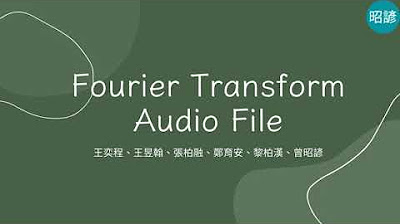Digital Audio: How Does Sample Rate Affect the Sound?
Summary
TLDRIn this informative video, the host delves into the concept of sample rate in digital audio, explaining its significance in audio quality and frequency response. Using the analogy of frame rate in video, the host clarifies how sample rate affects the capturing and recreation of sound waves. The importance of the Nyquist theorem is highlighted, which dictates that to accurately reproduce a frequency, it must be sampled at least twice. The video also discusses the impact of different sample rates on audio clarity and the host shares personal preferences, inviting viewers to share their experiences and sample rate choices.
Takeaways
- 🎥 The video is part of a digital audio basics series focusing on sample rate and its impact on audio quality.
- 🔍 Sample rate is compared to frame rate in video, illustrating how frequently audio is sampled and recreated digitally.
- 📉 Sample rate is crucial during the conversion from analog to digital audio, capturing snapshots of sound wave variations.
- 📈 A higher sample rate means more frequent audio samples are taken, potentially leading to better frequency response.
- 📉 The Nyquist theorem states that to accurately recreate a frequency, it must be sampled at least twice its wavelength.
- 🚫 Low sample rates can result in the loss of higher frequencies, which is noticeable in audio quality.
- 👂 The range of human hearing is from 20 Hz to 20 kHz, and to capture this, a sample rate of at least 40 kHz is needed.
- 🤔 The exact reason for choosing 44.1 kHz as a standard sample rate is not clear but is based on the Nyquist theorem.
- 📚 The presenter uses textbooks and resources to deepen their understanding of audio concepts and encourages viewers to do the same.
- 🎧 The presenter personally prefers working at a 96 kHz sample rate after conducting a blind listening test in a studio environment.
- 💬 The video invites viewers to share their preferred sample rate and reasons in the comments section for discussion.
Q & A
What is the main topic of the video?
-The main topic of the video is sample rate in digital audio and how it affects the quality of audio recordings.
What is an analogy used to explain sample rate?
-The analogy used to explain sample rate is frame rate in video, where a series of still images are played in quick succession to create the illusion of motion.
What happens during the process of converting analog audio to digital?
-During the conversion from analog to digital, variations in voltage (analog audio) are taken as snapshots of data through time, which are then stored as digital samples.
What is the significance of the Nyquist theorem in relation to sample rate?
-The Nyquist theorem states that to accurately recreate a certain frequency, it must be sampled at least twice its wavelength. This principle is crucial in determining the necessary sample rate for recording audio accurately.
Why might higher frequencies be lost when using a low sample rate?
-Higher frequencies have shorter wavelengths, and according to the Nyquist theorem, they require a more frequent sampling rate to be accurately recreated. Using a low sample rate can result in the loss of these higher frequencies.
What is the typical range of human hearing in terms of frequency?
-The typical range of human hearing is from 20 Hertz to approximately 20 kilohertz.
Why is a sample rate of at least 40 kilohertz necessary to capture the upper range of human hearing?
-According to the Nyquist theorem, to accurately capture the highest frequency of human hearing (20 kHz), the sample rate must be at least twice that frequency, which is 40 kHz.
What sample rate does the speaker use in their studio, and why?
-The speaker uses a sample rate of 96 kilohertz in their studio because they felt a qualitative improvement in audio quality during a blind listening test, even though the difference was not consciously audible.
What does the speaker suggest for those interested in learning more about audio concepts?
-The speaker suggests that those interested in learning more about audio concepts can check out the textbooks they have used, which will be linked in the video description.
How often does the speaker plan to release new videos?
-The speaker plans to release new videos every other Wednesday.
Outlines

Cette section est réservée aux utilisateurs payants. Améliorez votre compte pour accéder à cette section.
Améliorer maintenantMindmap

Cette section est réservée aux utilisateurs payants. Améliorez votre compte pour accéder à cette section.
Améliorer maintenantKeywords

Cette section est réservée aux utilisateurs payants. Améliorez votre compte pour accéder à cette section.
Améliorer maintenantHighlights

Cette section est réservée aux utilisateurs payants. Améliorez votre compte pour accéder à cette section.
Améliorer maintenantTranscripts

Cette section est réservée aux utilisateurs payants. Améliorez votre compte pour accéder à cette section.
Améliorer maintenant5.0 / 5 (0 votes)






